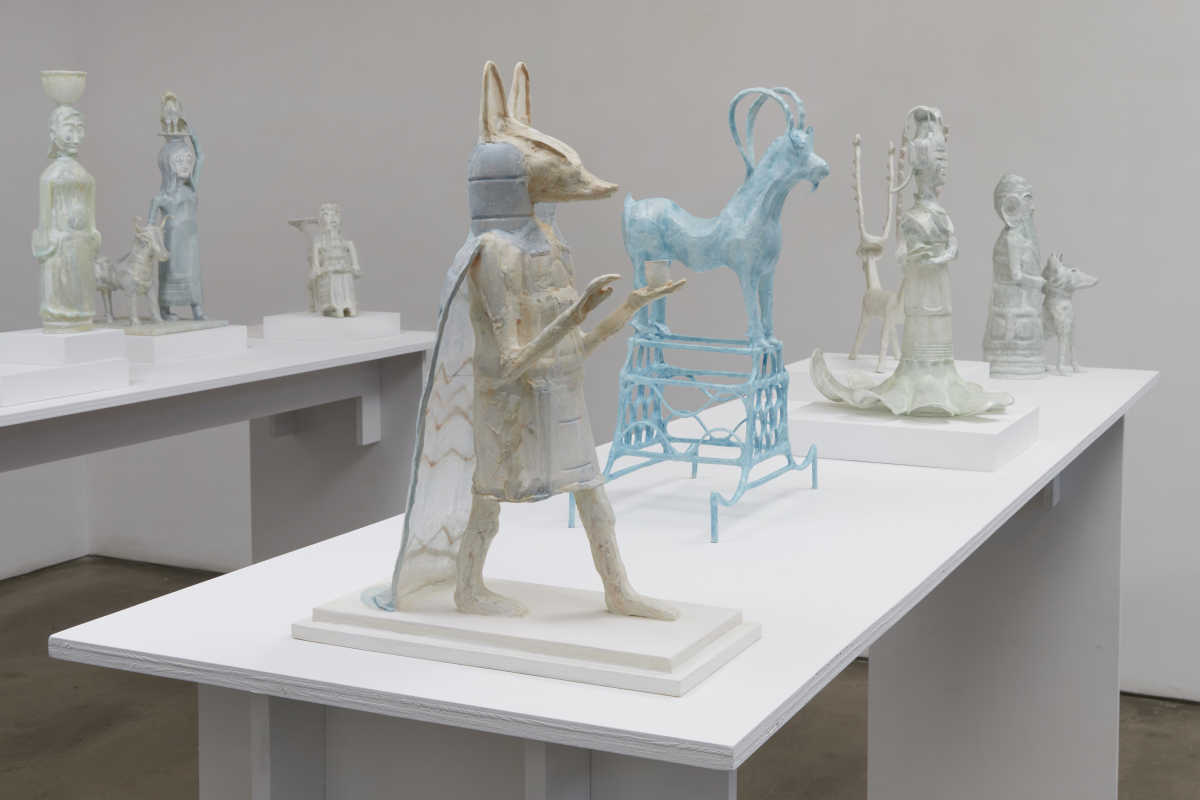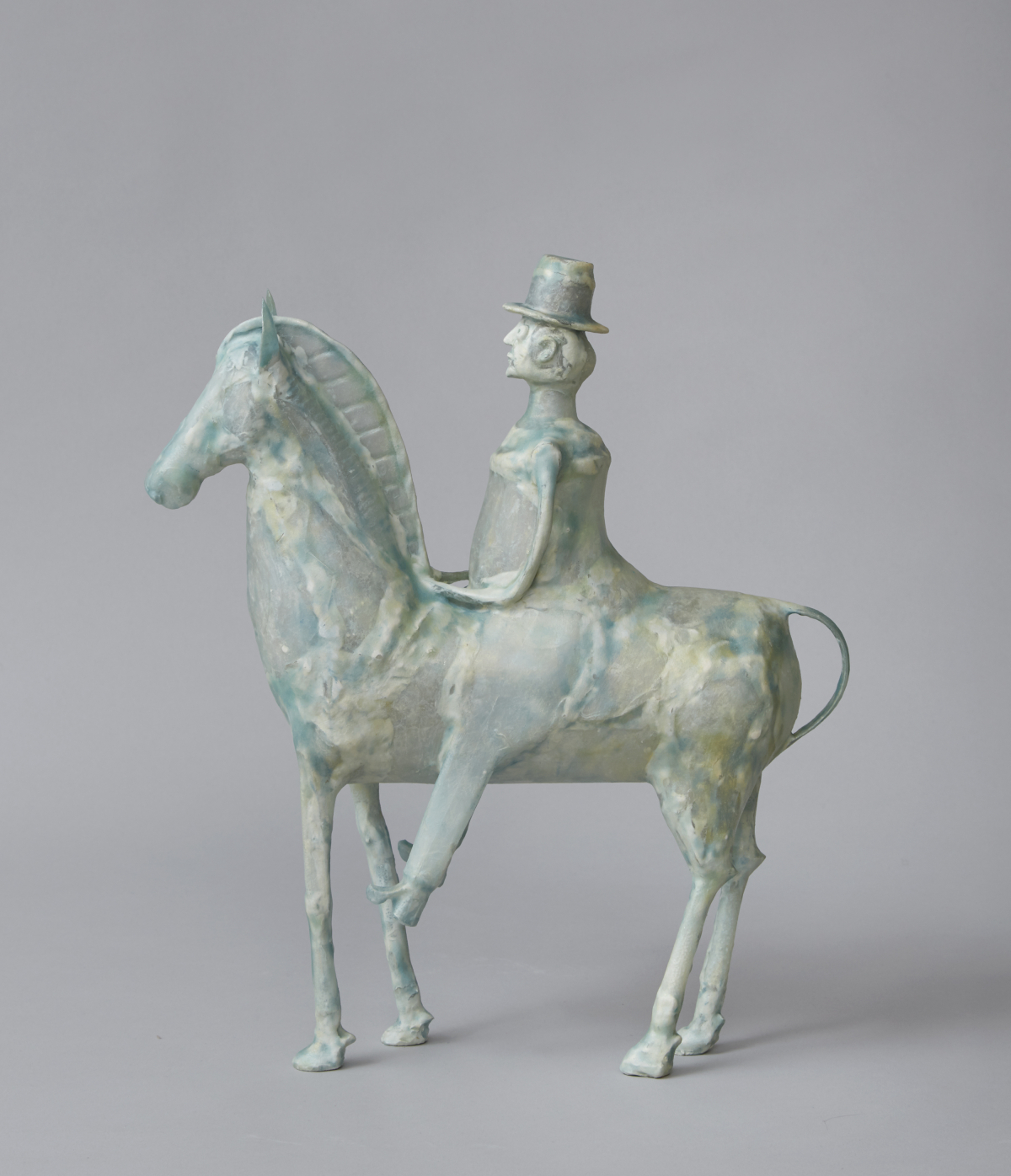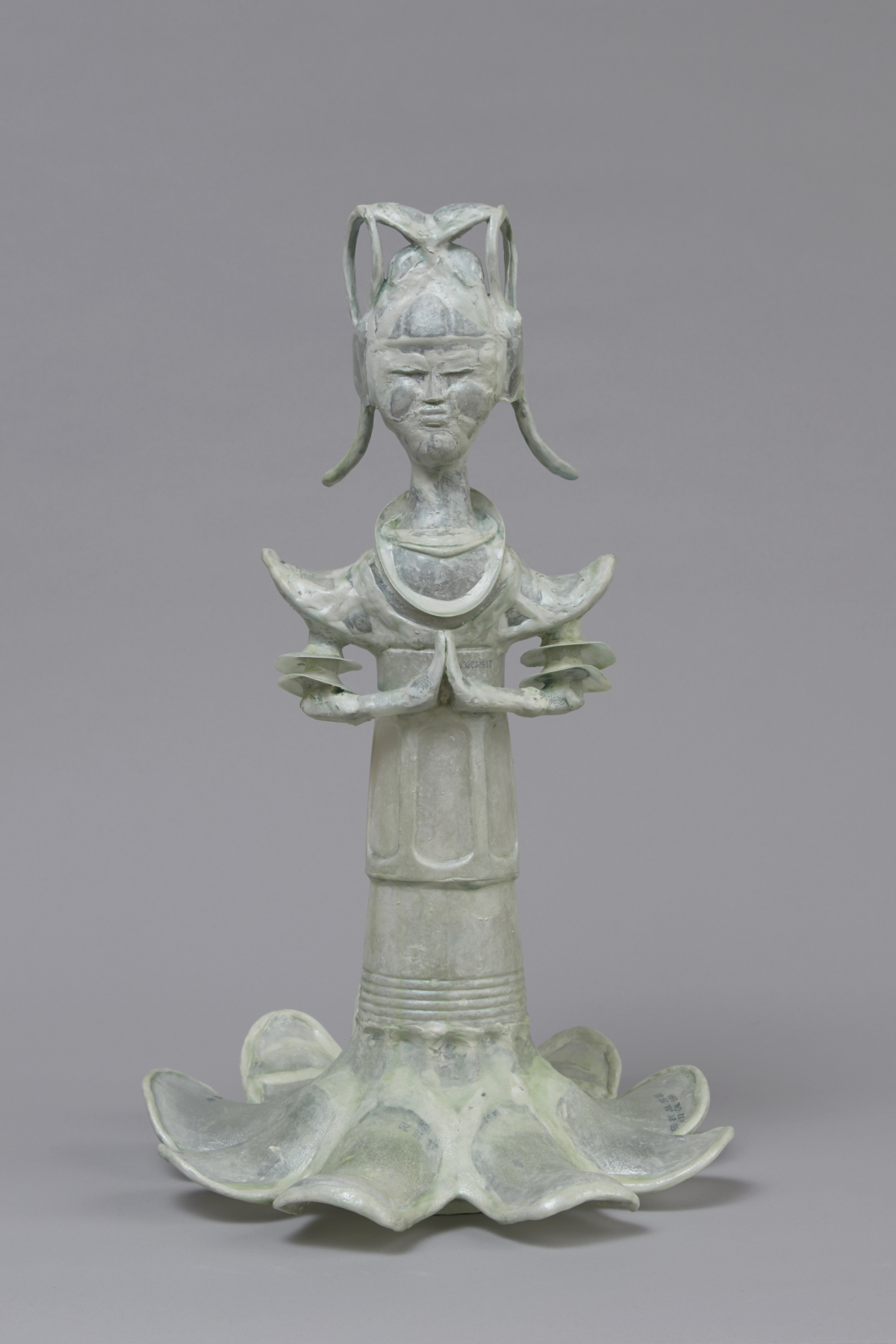
Animals, Idols and Us
Shari Mendelson at the Tibor De Nagy Gallery
There is a sense of recognition of the image before you. You know it, but not as it stands before in glass made in Ancient Rome or Greece. After a few moments your memory kicks in and you realize the image is taken from an Outsider Artist, Bill Traynor drawing of a man on a horse. You then begin to wonder more deeply about the materials used. Is it really glass-it appears almost too delicate. This will be one of the many questions that you have when seeing artist Shari Mendelson’s new show - Animals, Idols and Us —at Tibor De Nagy 11 Rivington Street on the Lower East side, October 29 to December 5, 2020.
The artist talked with me around how she developed the show and why she chose iconic images from that range from American Folk to ancient Egypt.
Kathleen Cullen: For this exhibit it looks as if you created a mini museum. Tell us about how you selected the images?
Shari Mendelson: Choosing the sources that influence my work isintuitive. Many of the works that I use as a model are pieces that I have been looking at for years. As I’m working on a piece, it may take on a quality of something else I’ve seen and I organically shift from one form to another. During the pandemic, I started looking at Tang dynasty tomb sculptures: figures that were meant to comfort or entertain the dead. I was also looking at Sumerian votive figures: figures that would embody an individual and pray on their behalf. Although I’m looking closely at these sources and others, my pieces each take on an identity of their own. They are not meant to be replicas.

KC: The pieces are exquisitely executed and look very precious. Ironically we learn they are made of recycled plastic. Can you describe the material?
SM: As you said, the main material is recycled plastic. I save the plastic bottles that I personally use, I find them on the street, and friends and family also save them for me. Our plastic trash offers a wealth of shapes, textures and colors that I use to form my sculptures.
KC: What is the process used to actually create the piece?
SM: I cut the plastic bottles into pieces that conform to the specific convex and concave shapes that I need. Then I hot glue the plastic pieces together to get a sense of the form. Next I reinforce the seams with a moldable resin which physically makes the piece strong and visually emphasis the process. My method of working is not linear — I cut and carve parts away and remake the piece over and over until I get the exact form I want. The piece often goes in a direction of its own and I have to be willing to go with the process and let the form develop. Once the overall shape seems right, I use acrylic polymers with mica powders and pigments to give the pieces a glaze-like surface.
KC: What experience did you think the viewer would have when they see they work? What do you hope they take with them?
SM: I hope the viewer will be transported. It would be great if they considered the cultures of the past and our place in the continuum of time. I hope the viewer will notice the humor in the work and see my reverence for the historical sources. But really, I hope the viewer will have an experience that is unique to themselves.

KC: How does this show fit into the work you have been doing? Will this serve as a further influence and what can we expect next?
SM: I’ve been working with recycled plastic as my material and ancient art as my source for about twelve years. The pieces in Animals, Idols, and Us are more figurative than the work that preceded it. My work comes out of my working process — it reveals itself slowly through that process. I have ideas of pieces that I want to make but we’ll have to see where they take me.
